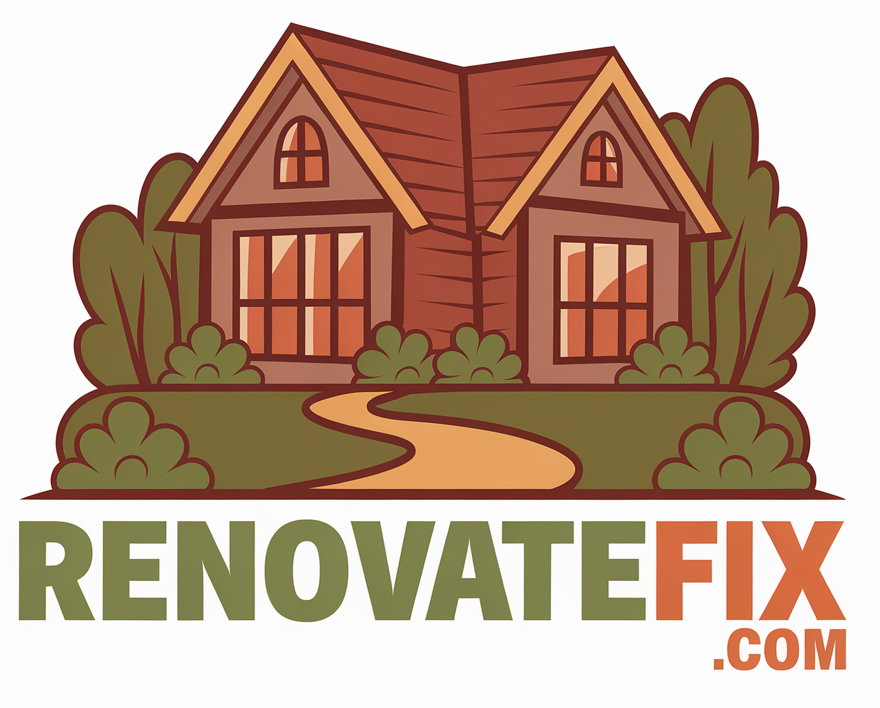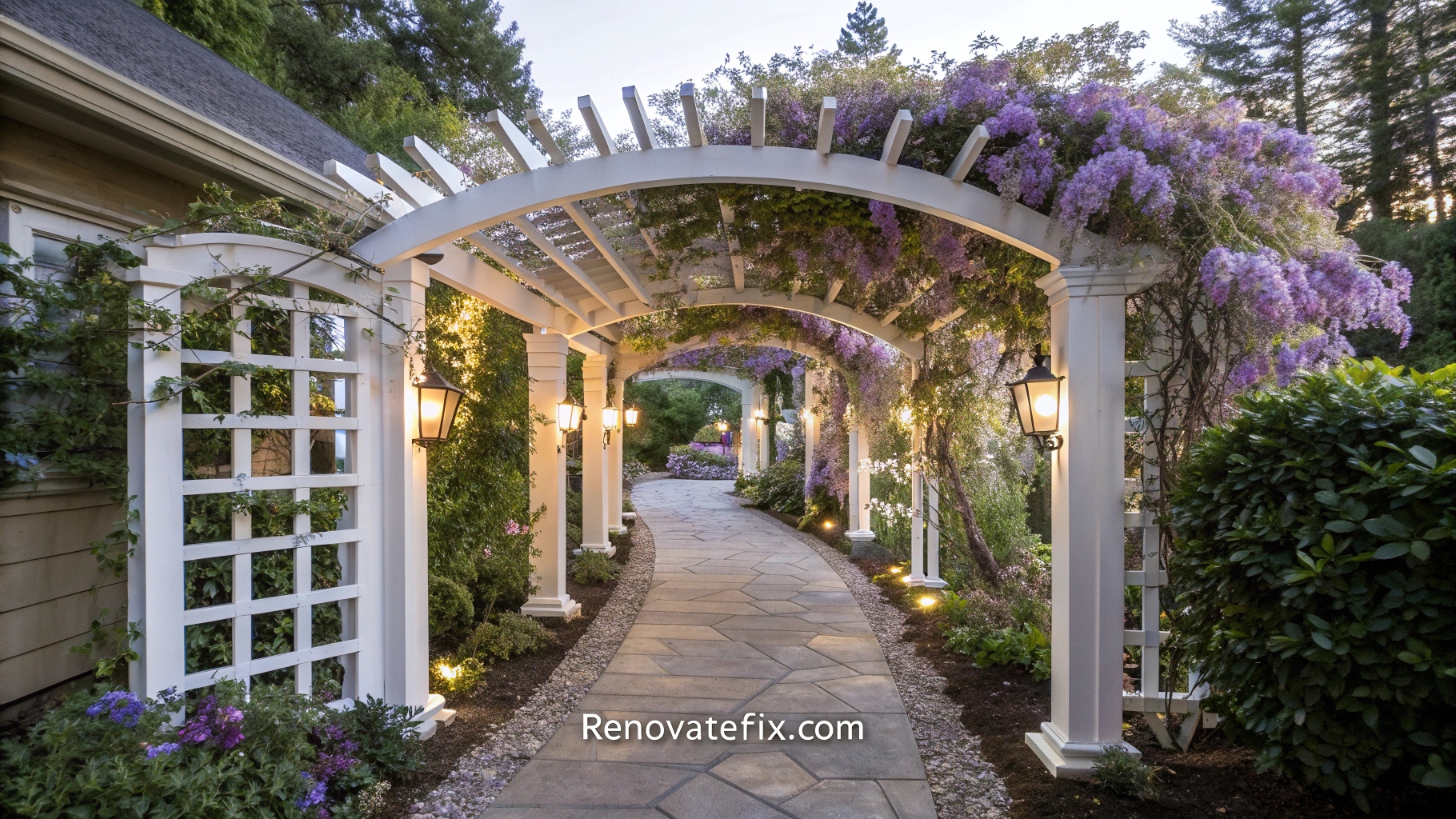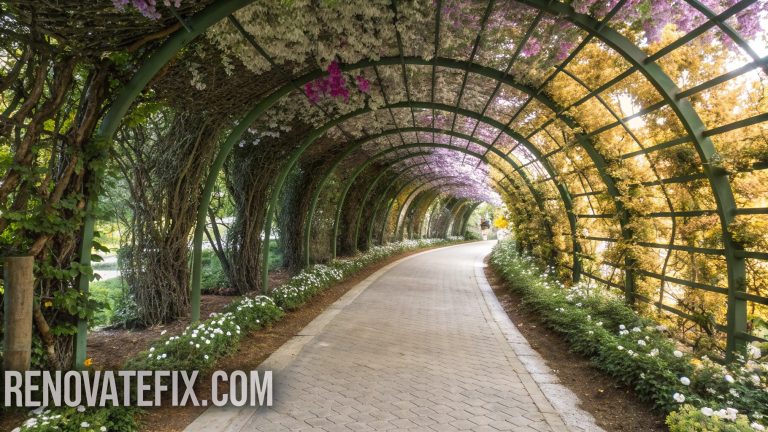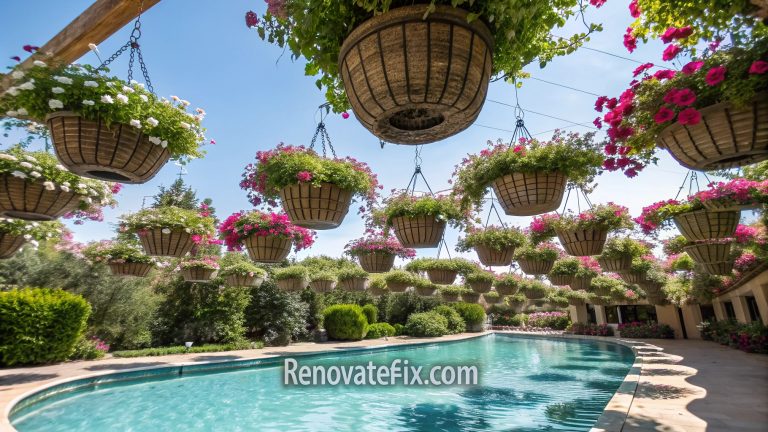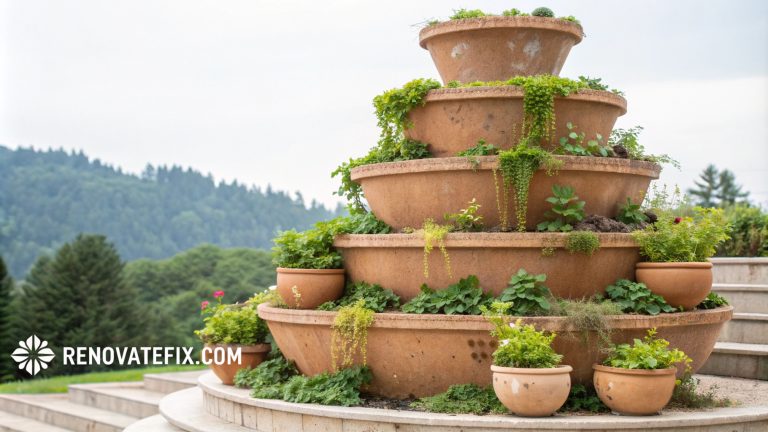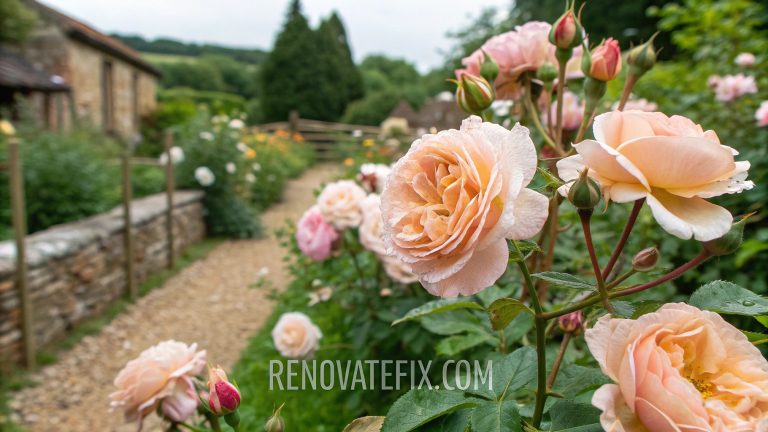Garden Structures Magnificent Ideas to Elevate Your Outdoor Space12 Garden Structures Magnificent Ideas to Elevate Your Outdoor Space
A beautiful garden offers more than just plants and flowers; it creates an atmospheric retreat that extends your living space outdoors.
Adding thoughtfully designed garden structures can dramatically enhance both aesthetics and functionality, providing focal points, shade, growing support, and spaces for relaxation or entertainment.
From classic wooden frameworks to modern architectural elements, these permanent additions define garden rooms, establish pathways, and create visual interest throughout seasons.
This comprehensive guide explores twelve outstanding garden structures ideas that will inspire your next landscape project, whether you’re working with a sprawling backyard or a modest courtyard.
1. Pergolas
Soaring overhead with stately columns supporting horizontal beams, pergolas establish magnificent outdoor rooms that blend openness with partial coverage.
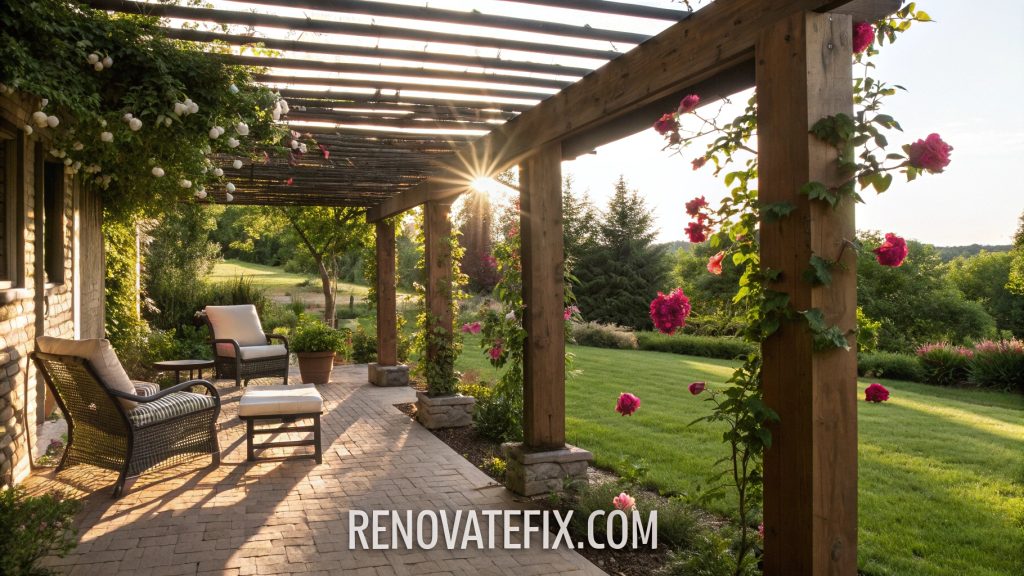
Sunlight filters through overhead slats, casting ever-changing shadow patterns across seating areas below while providing support for climbing roses, wisteria, or grapevines that add natural ceiling elements.
Pergolas bridge architectural styles between homes and landscapes, offering semi-private dining spaces or lounging areas that feel both protected and connected to surrounding gardens.
2. Arbors
Graceful passageways marking transitions between garden areas, arbors create welcoming entryways that invite exploration beyond their boundaries.
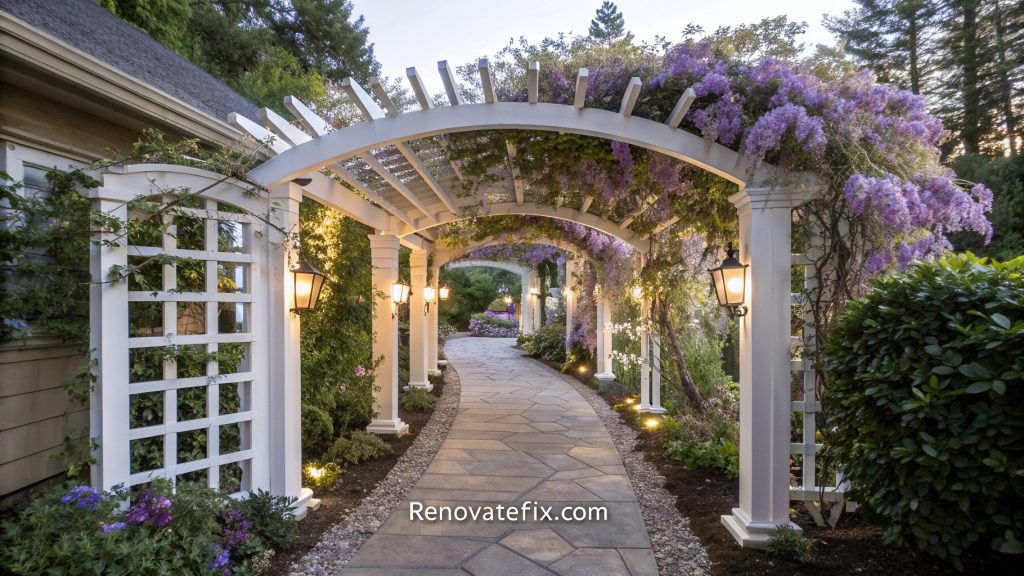
Smaller than pergolas yet equally impactful, these arched frameworks become living sculptures when adorned with climbing plants that cascade downward, forming fragrant tunnels during blooming seasons.
Garden arbors serve as perfect frames for pathways, benches, or gates, establishing visual punctuation marks that draw visitors forward through carefully orchestrated garden experiences.
3. Gazebos
Octagonal or round structures with solid roofs, gazebos offer fully sheltered retreats that stand as impressive focal points within garden landscapes.

Raised slightly above ground level with wraparound seating built into interior walls, these charming pavilions provide protection from sun and rain while maintaining panoramic views of surrounding gardens.
Gazebos evoke nostalgic charm while serving practical purposes as outdoor dining spaces, meditation spots, or small gathering areas regardless of weather conditions.
4. Trellises
Vertical frameworks constructed from wood, metal or bamboo, trellises maximize growing space by directing plants upward rather than outward across valuable garden real estate.
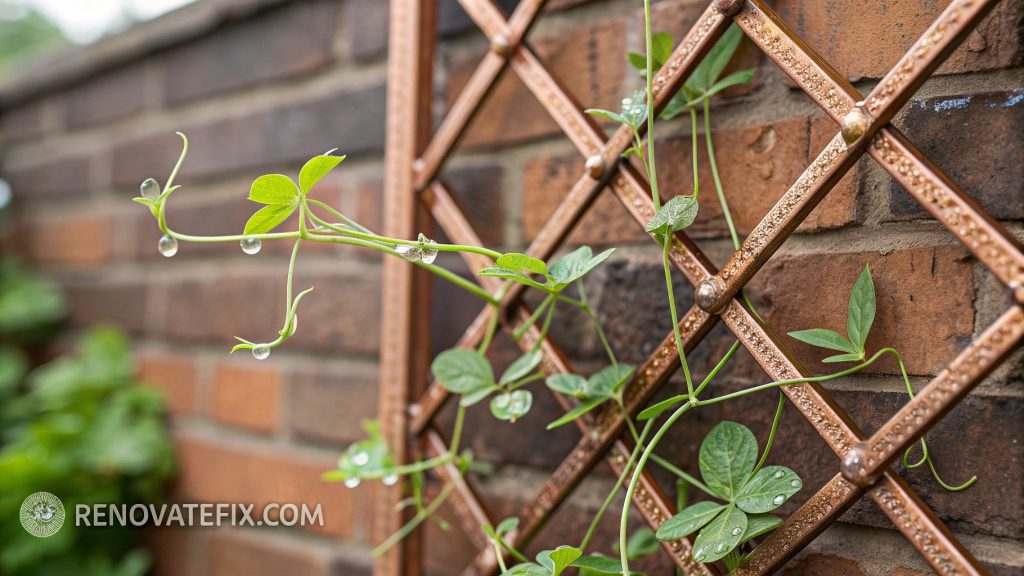
Flat against walls or freestanding as dividers, these practical structures support flowering vines, vegetables, or fruit-bearing plants while creating living walls that add privacy, shade, and visual interest to otherwise plain surfaces.
Trellises bring architecture and horticulture together, turning blank spaces into productive growing areas that change dramatically throughout seasons.
5. Pavilions
Substantial roofed structures without full walls, pavilions bridge indoor-outdoor living by providing weather protection while maintaining open sightlines to surrounding landscapes.

Often featuring stone floors, vaulted ceilings, and impressive beamwork, these generous spaces accommodate larger gatherings, outdoor furniture collections, or entertainment systems that wouldn’t survive exposure to elements.
Pavilions extend seasonal enjoyment of gardens by months, creating comfortable microclimates where ceiling fans dispel summer heat while fireplaces ward off autumn chills.
6. Greenhouses
Glass-walled sanctuaries that capture sunlight and warmth, greenhouses extend growing seasons dramatically while providing controlled environments for sensitive plants, seedling propagation, or exotic specimens.
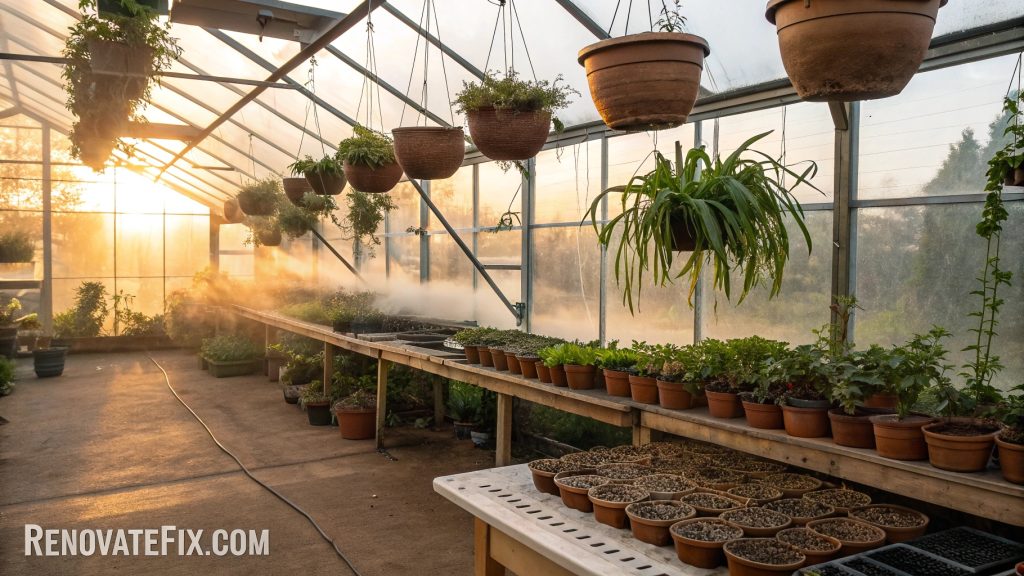
Beyond purely practical purposes, these crystal palaces create magical winter retreats where gardeners escape frost while surrounded by verdant growth, potted citrus trees, and flowering plants that would otherwise perish outdoors.
Greenhouses range from grand Victorian-inspired structures to modest lean-to models, each offering microclimates that expand gardening possibilities year-round.
7. Potting Sheds
Gardener’s workrooms that combine storage functionality with charm, potting sheds house essential tools, supplies, and seasonal equipment while providing sheltered spaces for plant preparation tasks regardless of weather.
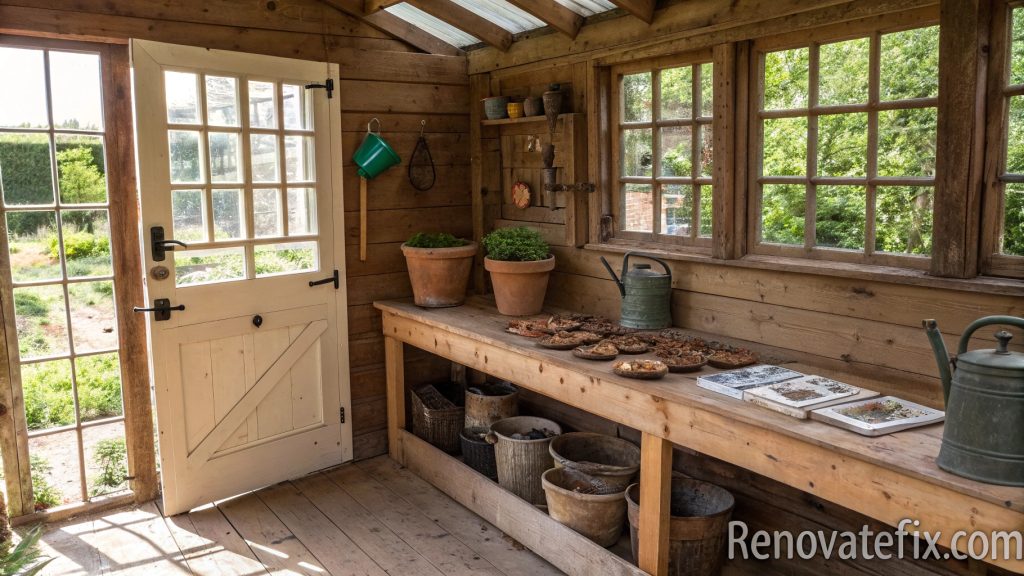
Windows positioned strategically maximize natural light over workbenches where seedlings begin their journey, while shelving units store collections of pots, amendments, and reference books within easy reach.
Potting sheds evolve into personal sanctuaries reflecting individual gardening styles through displays of vintage tools, botanical prints, or collections of unusual containers.
8. Obelisks
Tall, slender pyramidal structures that add vertical emphasis to garden beds, obelisks provide architectural interest even when plants are dormant while offering support for climbing specimens during growing seasons.
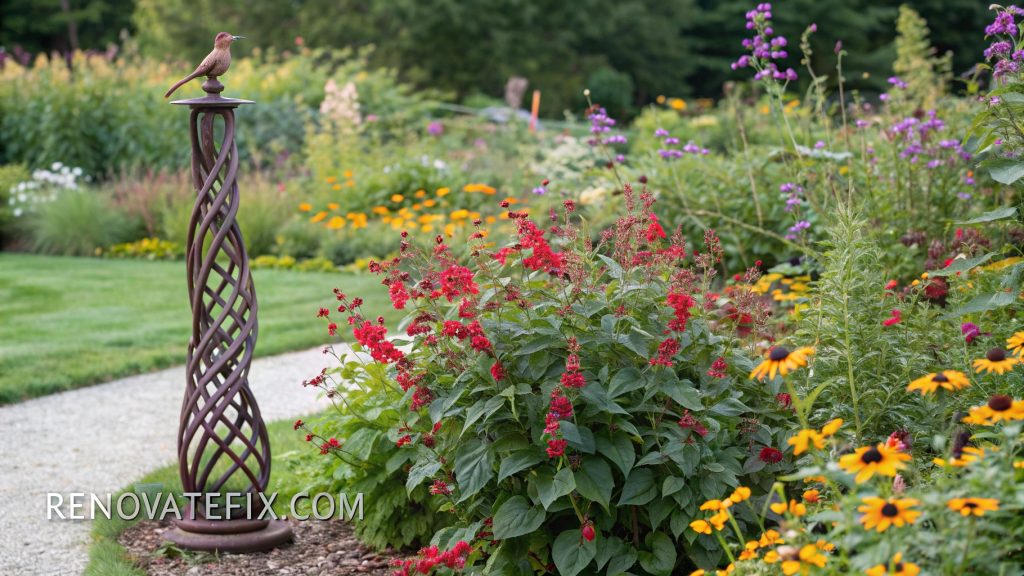
Constructed from wood, metal, or concrete, these sculptural elements draw eyes upward, creating height variations that prevent gardens from appearing flat or monotonous throughout changing seasons.
Obelisks serve as garden exclamation points, marking significant intersections or highlighting particularly precious plantings while maintaining elegant profiles that complement rather than overwhelm surrounding vegetation.
9. Arches
Curved frameworks spanning pathways or garden openings, arches create portal moments that psychologically separate different garden areas while physically supporting climbing plants.
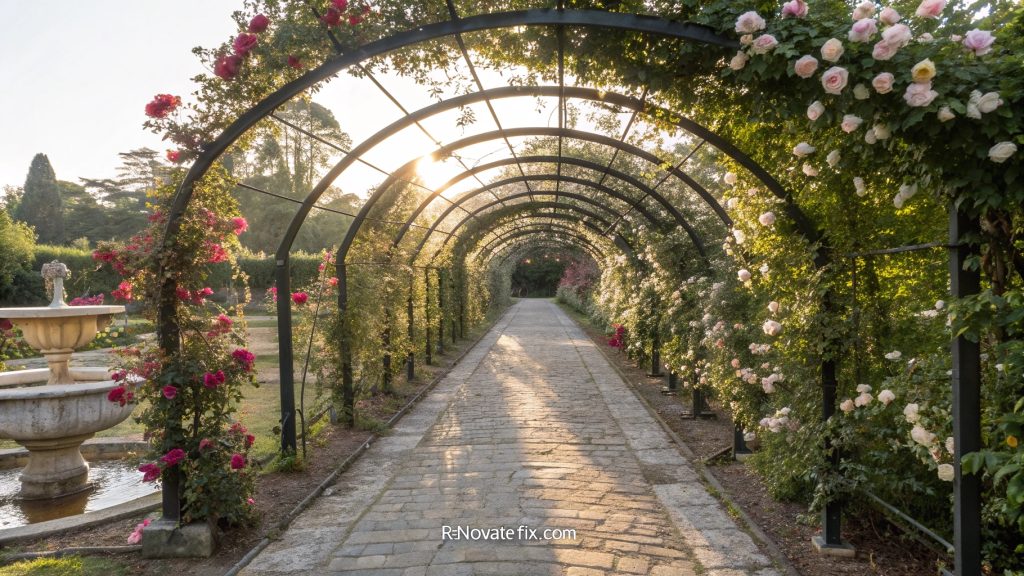
Narrower than arbors yet equally impactful, these graceful structures establish rhythm when placed sequentially along walkways, their repetition leading visitors forward through carefully orchestrated garden experiences.
Arches frame views beyond their boundaries, creating anticipation about what lies ahead while simultaneously directing attention to specific focal points deliberately positioned within their curves.
10. Raised Bed Frames
Practical growing containers that elevate soil levels above surrounding terrain, raised bed frames improve drainage, prevent soil compaction, and create accessible gardening spaces for those with mobility limitations.

Constructed from timber, stone, corrugated metal, or composite materials, these structured growing areas warm earlier in spring seasons while establishing clear boundaries between plantings and pathways.
Raised beds bring order to vegetable gardens, herb collections, or cutting flowers while their elevated edges double as casual seating during maintenance tasks or garden appreciation moments.
11. Outdoor Kitchens
Culinary spaces designed for open-air cooking experiences, outdoor kitchens bring food preparation into garden environments where fresh herbs and vegetables transition directly from soil to serving platters.
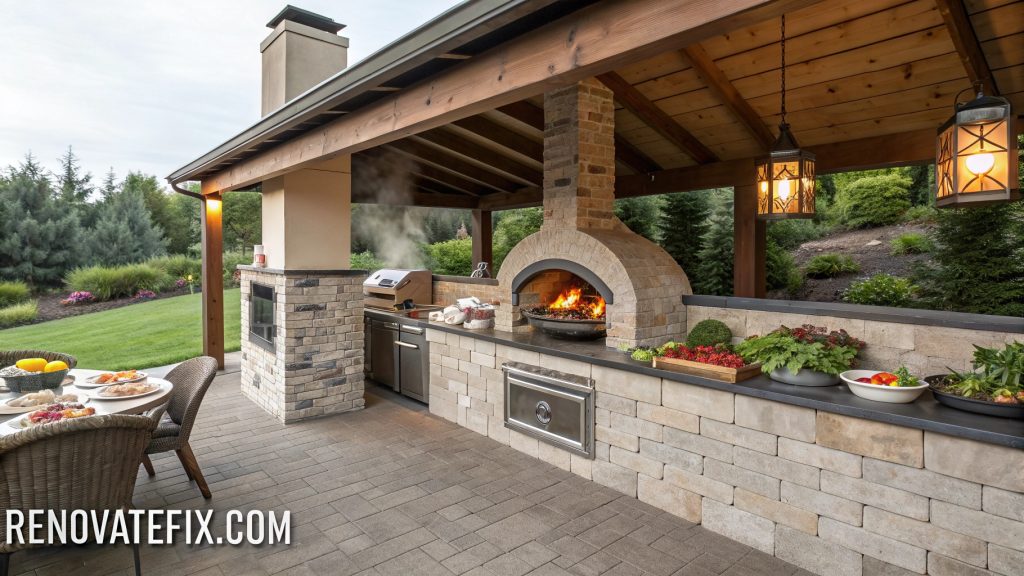
Combining built-in grills, countertops, sinks, and storage areas, these functional zones eliminate constant trips indoors while creating social hubs where conversations flow naturally during meal preparations.
Outdoor kitchens celebrate connections between growing and cooking, elevating al fresco dining experiences through proximity to productive garden areas supplying ingredients moments before consumption.
12. Fire Pit Surrounds
Circular or angular structures framing controlled flames, fire pit surrounds extend garden enjoyment into cooler evenings by providing warmth, light, and natural gathering spaces where conversations deepen as darkness falls.
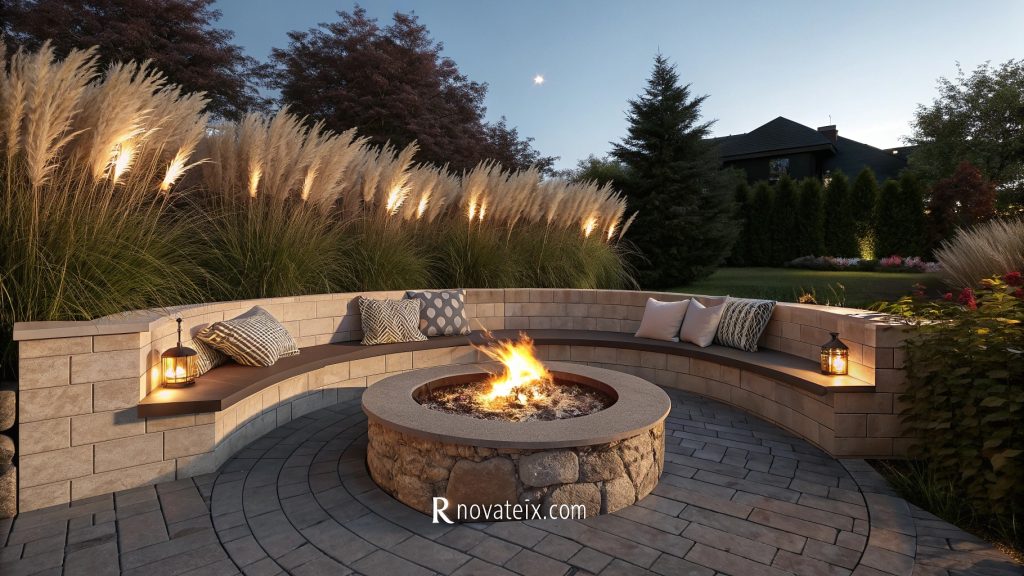
Constructed from stone, brick, or concrete blocks, these architectural elements establish destination points within garden landscapes while offering seating walls that accommodate larger groups during outdoor entertaining events.
Fire pit surrounds create primal focal points that draw visitors naturally toward their glow, establishing intimate spaces where garden experiences continue long after sunset.
Conclusion
Garden structures represent investments that yield dividends through decades of enjoyment, weather protection, and aesthetic enhancement. Unlike seasonal plantings that require annual renewal, these architectural elements provide permanent framework around which gardens evolve and mature.
Whether chosen for practical functions or purely decorative purposes, thoughtfully selected garden structures establish character, create microclimates, and extend usability of outdoor spaces throughout changing seasons.
By incorporating one or several ideas from this collection, you’ll create lasting impact within your landscape while establishing signature spaces that reflect your personal style and enhance your connection with nature.
The most successful gardens balance openness with enclosure, and these structural elements provide perfect counterpoints to softscape elements, creating harmony between built and natural environments.
